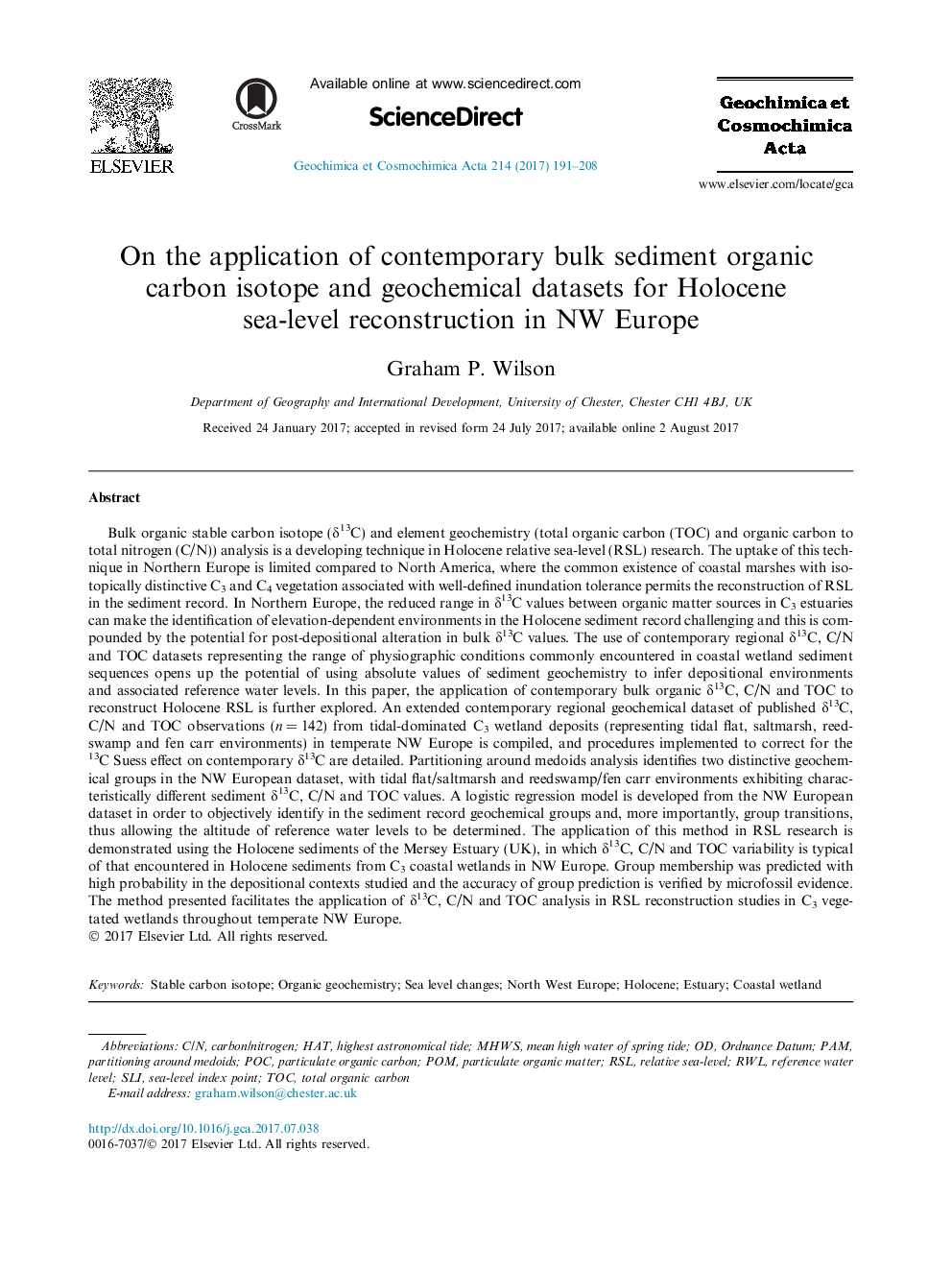| کد مقاله | کد نشریه | سال انتشار | مقاله انگلیسی | نسخه تمام متن |
|---|---|---|---|---|
| 5783142 | 1637943 | 2017 | 18 صفحه PDF | دانلود رایگان |
- δ13C, C/N & TOC measurements are increasingly used in Holocene sea-level research.
- A compiled NW Europe coastal sediment δ13C, C/N & TOC database is presented.
- NW Europe coastal wetland sediment δ13C, C/N & TOC values cluster into two groups.
- Database used to distinguish past tidal levels in C3-vegetated estuary deposits.
- Methodology permits δ13C, C/N & TOC use in sea-level research in temperate NW Europe.
Bulk organic stable carbon isotope (δ13C) and element geochemistry (total organic carbon (TOC) and organic carbon to total nitrogen (C/N)) analysis is a developing technique in Holocene relative sea-level (RSL) research. The uptake of this technique in Northern Europe is limited compared to North America, where the common existence of coastal marshes with isotopically distinctive C3 and C4 vegetation associated with well-defined inundation tolerance permits the reconstruction of RSL in the sediment record. In Northern Europe, the reduced range in δ13C values between organic matter sources in C3 estuaries can make the identification of elevation-dependent environments in the Holocene sediment record challenging and this is compounded by the potential for post-depositional alteration in bulk δ13C values. The use of contemporary regional δ13C, C/N and TOC datasets representing the range of physiographic conditions commonly encountered in coastal wetland sediment sequences opens up the potential of using absolute values of sediment geochemistry to infer depositional environments and associated reference water levels. In this paper, the application of contemporary bulk organic δ13C, C/N and TOC to reconstruct Holocene RSL is further explored. An extended contemporary regional geochemical dataset of published δ13C, C/N and TOC observations (n = 142) from tidal-dominated C3 wetland deposits (representing tidal flat, saltmarsh, reedswamp and fen carr environments) in temperate NW Europe is compiled, and procedures implemented to correct for the 13C Suess effect on contemporary δ13C are detailed. Partitioning around medoids analysis identifies two distinctive geochemical groups in the NW European dataset, with tidal flat/saltmarsh and reedswamp/fen carr environments exhibiting characteristically different sediment δ13C, C/N and TOC values. A logistic regression model is developed from the NW European dataset in order to objectively identify in the sediment record geochemical groups and, more importantly, group transitions, thus allowing the altitude of reference water levels to be determined. The application of this method in RSL research is demonstrated using the Holocene sediments of the Mersey Estuary (UK), in which δ13C, C/N and TOC variability is typical of that encountered in Holocene sediments from C3 coastal wetlands in NW Europe. Group membership was predicted with high probability in the depositional contexts studied and the accuracy of group prediction is verified by microfossil evidence. The method presented facilitates the application of δ13C, C/N and TOC analysis in RSL reconstruction studies in C3 vegetated wetlands throughout temperate NW Europe.
Journal: Geochimica et Cosmochimica Acta - Volume 214, 1 October 2017, Pages 191-208
